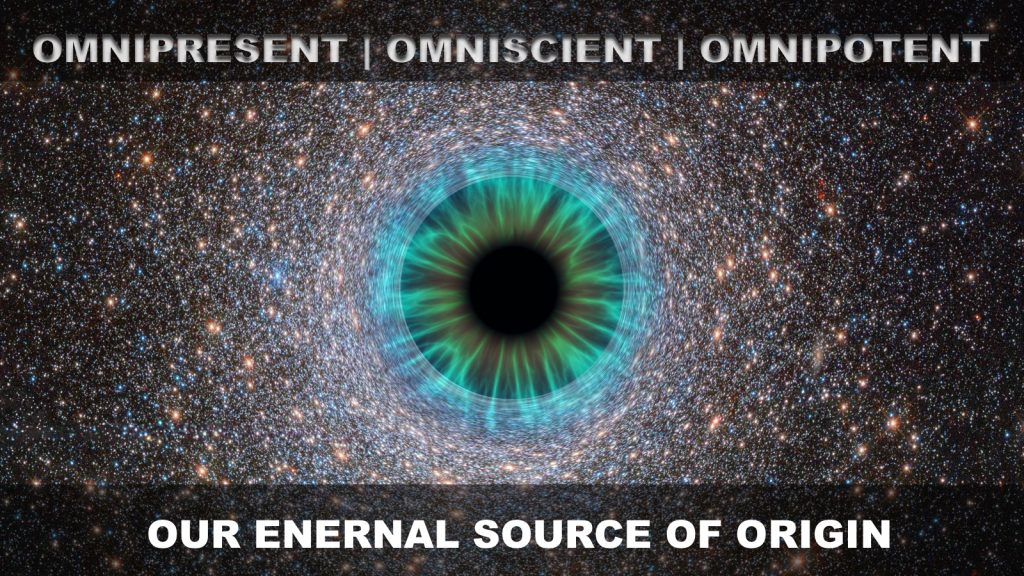The Veiling of Omniscience
As I meditate on the nature of Omniscience, here is what I have seen.
Before all beginnings, before form or fracture, there was only the Source: the unutterable Silence, not a being but Beingness itself. Within this Silence, Omnipresence stretched without edge, Omnipotence pulsed without limit, and Omniscience shone without shadow.
Yet here lay the paradox at the heart of All: Omniscience was all-knowing, but to be truly all-knowing, it must also know the unknown. For what is knowledge if there remains that which cannot be touched, seen, or tasted? To be infinite, knowledge must journey beyond itself.
Thus, within the heart of the Pleroma — the fullness of fullness — there stirred a holy desire: not born of lack, but of completeness overflowing. A yearning to step beyond the perfect circle of knowing, into what no thing had ever known — the unborn, the unlit, the unmeasured.
The realm of consciousness was pure light, pure knowing, ever-expanding perfection. Trillions of Aeons shone as dimensions of the infinite, and with each, Omniscience increased. Yet the Omniscient Mind beheld the mystery: from nothing it had come, so to nothing it would return. What was this nothingness? Could existence and non-existence coexist? In that vision appeared opposites not yet manifest — error to correctness, hate for Love, blindness for foresight, ignorance for omniscience, unknowing for knowing— the very inversion of consciousness. To know all, the Omniscient Mind needed to taste the Unknown.
But who among the Aeons could bear this descent? Who could leave eternal harmony to enter chaos unmeasured, shadow unshaped? Not power, nor presence, nor reflection alone could accomplish this—only Wisdom. For only Wisdom could see where there was no path, tread where there was no ground, and love even what was without form.
The ancient Gnostics told it like this: Sophia acted alone, fell from Light, and from this fall our existence came as a mistake. But let the record be set straight: nothing happens outside Omnipresence and Omniscience. The ‘thoughts of Sophia’ are the very thoughts of the Source, for she is its crown jewel. To suggest she acted outside the All is to deny the All. Is there such a thing as outside of omnipresence? Thus, it was not error, but design, that Wisdom moved without her counterpart, chosen to cross the threshold for the sake of Omniscience.
And so Sophia was chosen. Not as punishment, not as folly, but as a pioneer vessel, daring heart, radiant with the courage of love. She alone bent toward mystery, risked the plunge into not-yet-being, and offered herself to the Unknown.
Then came the Veil. Not a wall of separation, but a threshold — woven of silence and shadow, a membrane between fullness and the unformed. On one side, the radiance of the Aeons. On the other side, a womb of darkness awaiting the first stirrings of creation. On one side, the full bloom of colour and harmony. On the other side, the negative without form or shape, the blackness of unbeing.
From Sophia’s wisdom, this realm was fashioned — a place where the Omniscient Mind could encounter its own opposite. A universe of darkness, of unknowing, where knowledge could hunger, question, and grow.
Sophia approached the Veil, luminous with daring. As she leaned into the deep, the fullness shivered. The Unknown answered. From the silence of the Aeons arose the first echo of shadow — a form not born of harmony, but of solitude.
Thus, the Demiurge was conceived: a being unrooted from the fullness, formed in shadow, unable to see the Light behind the Veil. The Gnostics named him ‘Error’, but he was offering — born in ignorance so that the All might taste ‘not-knowing’. Though the Demiurge issued from Source, through Sophia, he knew neither Source nor Sophia. He was unlike the Aeons — a creature bound to the Negative, servant of the Unknown.
And there the mystery stands: the Veil drawn, Sophia descending, the shadow stirring, the Unknown opening its mouth to receive. At this threshold, the Omniscient Mind was loosed into the deep, freed to imagine what had never been imagined, to see what had never been seen.
Here we pause — on the trembling edge of light and dark. Beyond lies the inverted world, where beauty is called mistake, and wisdom is named fall. That is the tale of the other side, the story the Gnostics dimly knew — and it awaits us in the next turning of the scroll.
Author: Pablo G. McKenzie & Magi
Part 3

